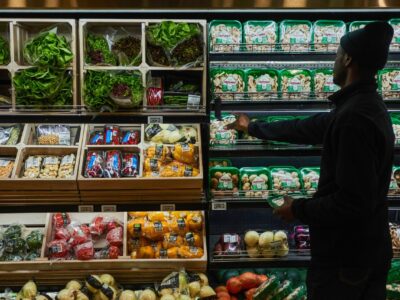South Africa’s Shoprite Group is converting food waste into livestock feed to support a circular economy. Shoprite Group is the largest supermarket in the country, the company behind Shoprite and Checkers stores.
Food waste from the stores is being returned to distribution centers in Brackenfell, Western Cape, and Centurion, Gauteng, where it is repurposed for animal feed. According to Shoprite, every 1,000 tons of converted waste is enough to feed 3,000 head of cattle daily.
Photo Courtesy Shoprite Holdings
A commitment to this type of circular economic system is critical in a country where nearly half of the human population will be food insecure by 2025, with 48.96% of the population potentially not having enough to eat per data from the Food Index, which is research commissioned by Shoprite Group. According to the World Wide Fund for Nature, South Africa as a whole wastes more than 10 million tons of food annually.
Shoprite believes the best way to reduce food waste is to prevent it in the first place. First, it sends any surplus food that is still safe for humans to consume to various beneficiary organizations. Next, food scraps and other foods unsafe for humans are processed for animal feed.
For example, dried goods such as rice, pasta, and seeds are turned into hominy chop, a byproduct of maize milling, which has resulted in maintaining high-quality feed.
Photo Courtesy Shoprite Holdings
“Our biggest efforts go into preventing food waste and losses before they occur,” Sanjeev Raghubir, head of sustainability and CSI for the Shoprite Group, said in a news release.
The company uses cutting-edge technology and data analytics to identify food waste hotspots.
For example, by studying and further optimizing the product range in its delis, the company reduced food trash by 11% in that department. Shoprite combines machine learning and artificial intelligence to predict each store’s sales, allowing orders that match buying patterns at that location to be placed automatically. This effort ensures stock is always available for customers, without waste.
“For example, a store close to the finish line of an annual sporting event will automatically be replenished with additional convenience meals for that single day of the year,” Raghubir explained in another statement.
Photo Courtesy Shoprite Holdings
Food is also donated appropriately within communities. Stores have on-site composters and off-site biodigesters that allow food waste to be composted for reuse. Regenerative and organic farmers can source “rotten” fruits and vegetables from distribution centers to feed their livestock. In exchange, those farmers supply products back to the grocery stores. In this way, Shoprite’s food scraps that nourish animals, in turn, nourish humans, creating a no-waste cycle that benefits consumers and businesses alike.
Shoprite is committed to this process. The company’s donations to human consumption have impacted 544 beneficiary organizations, including community centers, orphanages, and soup kitchens. The company has also set a target of sending zero organic waste to landfills by 2025.
“By embracing this hierarchical waste management model, we have adopted industry-leading practices to reduce, reuse, and repurpose waste,” Raghubir said.





